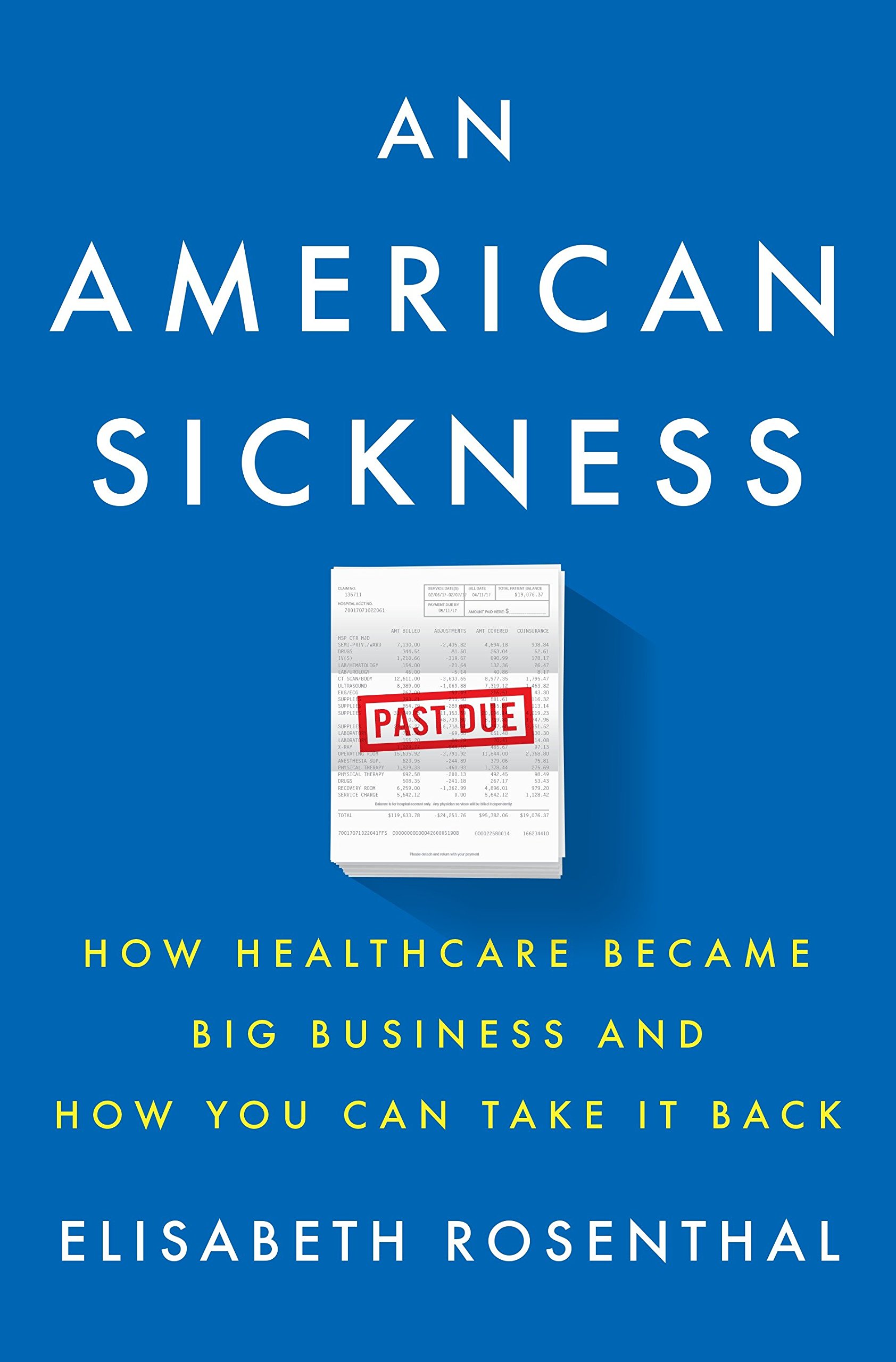Book Review: American Sickness
Published:
In An American Sickness, Elisabeth Rosenthal diagnoses our healthcare system with a serious case of bloated costs and misplaced priorities. A physician-journalist, she provides insightful examples from around the country backed with a technical understanding of the industry. The book is divided into two parts, each further subdivided by components of healthcare. In the first part, she traces the historical trends that led to modern malfunction; in the second part, she prescribes specific advice for patients and doctors.

Here’s the paperback and audiobook.
Utility: ⭐⭐⭐⭐ (4/5)
Writing: ⭐⭐⭐ (3/5)
The book is a well-researched overview to the topic. It covers nearly the entire ecosystem, including health benefit managers and government regulation.
However, that breadth came at the cost of in-depth analysis. The argumentative style of the book was lackluster. On a given page, you could reliably find the beginning of yet another sob story of the form “X patient received Y service and was surprised by Z bill.” While these stories did highlight the human cost of a broken healthcare system, they provided little to no insight on population statistics. What do average patients receive? How does that vary by region and demographic? I’m reminded of a point from John Pfaff’s Locked In: extreme examples may be salient, but they are definitionally not representative. If you’re a fan of data, this might not be the book for you.
The specific prescriptions, however, are very commendable. Rosenthal provides practical advice for interacting with your doctor or local hospital. It is sound advice that people should hear, particularly given the stakes of a misstep. An time-crunched reader would be well-served by skimming through part 1 and taking notes on part 2.
Notes
I found her “Economic Rules of the Dysfunctional Medical Market” to be an apt summary of her diagnosis. Here is my distillation of the original 10 rules:
- More (expensive) treatment is always better; a cure can be a threat to the bottom line.
- Competition and economies of scale can drive prices up, not down; they’ll rise to whatever we can pay.
- Pricing is noisy. Billing decisions are made in line with profit motive.
